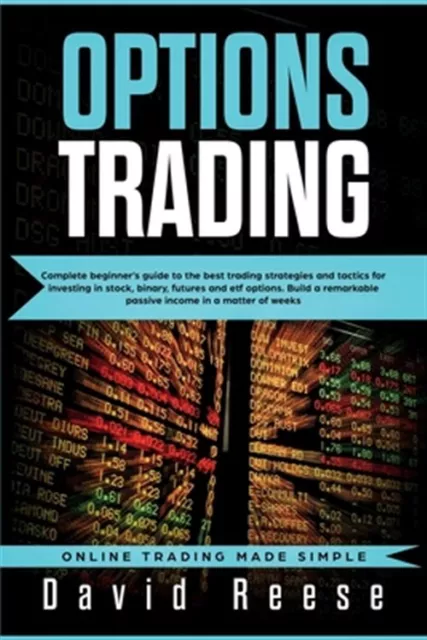In the realm of investing, options trading stands as a captivating and potent tool, offering investors unparalleled flexibility and the potential for substantial gains. This comprehensive guide will delve into the intricacies of options trading, empowering you with the knowledge and insights necessary to navigate this multifaceted financial landscape. From the foundational concepts to advanced strategies, we shall embark on a journey that unlocks the power of market fluctuations and empowers you to become a confident and successful options trader.

Image: www.gettogetherfinance.com
Delving into the Options Market: Unveiling the Basics
Options, in their essence, are financial contracts that grant the holder the right, but not the obligation, to buy or sell an underlying asset at a predetermined price, referred to as the strike price, on or before a specified date, known as the expiration date. As the name suggests, options provide investors with choices, empowering them to tailor strategies aligned with their unique investment objectives and risk appetite.
There are two primary types of options: calls and puts. Call options bestow upon the holder the right to purchase an underlying asset at the strike price, while put options confer the right to sell an underlying asset at the strike price. These options can be further classified as either European or American, with the former only exercisable on the expiration date and the latter exercisable at any time before the expiration date.
Understanding the Intrinsic and Time Value of Options
The value of an option is multifaceted, composed of both intrinsic value and time value. Intrinsic value represents the immediate financial gain that would be realized by exercising the option at its current price. Time value, on the other hand, embodies the potential for the option to appreciate in value as time passes, imbued with the expectation of future price fluctuations.
For call options, intrinsic value exists when the underlying asset’s price surpasses the strike price, while for put options, intrinsic value materializes when the underlying asset’s price falls below the strike price. As expiration approaches, time value dwindles, ultimately expiring worthless if the option is not exercised or sold.
Decoding the Greek Letters: Mastering Options Metrics
Options traders rely on a lexicon of Greek letters to quantify the various risks and sensitivities associated with their positions. Delta measures the change in an option’s price relative to the underlying asset’s price, while theta gauges the decay in time value as expiration nears. Vega captures the sensitivity to volatility, with higher volatility amplifying option prices. Rho quantifies the impact of interest rate changes, particularly relevant for longer-term options.
Comprehending these Greek letters empowers traders to make informed decisions, effectively managing risk and optimizing their trading strategies amidst the ever-shifting market landscape.

Image: picclick.com
Crafting Winning Options Strategies: A Tactical Arsenal
Options trading presents a vast array of strategies, each tailored to distinct market conditions and investor objectives. Covered calls, for instance, involve selling a call option against an underlying asset that the trader already owns, generating income while retaining the potential for upside. Protective puts, on the other hand, provide downside protection for long positions by purchasing a put option that grants the right to sell the underlying asset at a specified price.
Iron condors, a more advanced strategy, involve simultaneously selling both call and put options at different strike prices, profiting from a narrow trading range while limiting potential losses. These strategies, among many others, underscore the versatility and adaptability of options trading, enabling traders to navigate diverse market scenarios.
The Psychology of Options Trading: Embracing Emotional Intelligence
While technical proficiency is paramount in options trading, emotional intelligence holds equal sway in determining a trader’s success. Overcoming the pitfalls of fear and greed, managing risk with discipline, and maintaining objectivity amidst market volatility are essential traits that separate successful traders from the pack.
Recognizing cognitive biases, such as the tendency to chase losses or anchor to initial beliefs, can safeguard traders from costly decision-making. Developing a trading plan that outlines predefined entry and exit points, risk management protocols, and profit targets instills discipline and reduces the likelihood of impulsive trades driven by emotions.
Guide To Options Trading
Conclusion: Empowering Investors with Options Trading Proficiency
Options trading, when wielded with knowledge, strategy, and emotional discipline, empowers investors to unlock the full potential of market fluctuations. This guide has unveiled the intricacies of options trading, providing a roadmap for navigating this dynamic financial landscape. By embracing the concepts outlined within, you can transform yourself into a proficient options trader, capable of making informed decisions, managing risk effectively, and achieving financial success.
Remember, embarking on the path of options trading is an ongoing journey, requiring continuous learning, adaptation, and refinement. As you delve deeper into this captivating realm, you will inevitably encounter new challenges and opportunities. Embrace the pursuit of knowledge, stay abreast of market trends, and refine your strategies over time, and you will discover the true power that lies within the options market.






